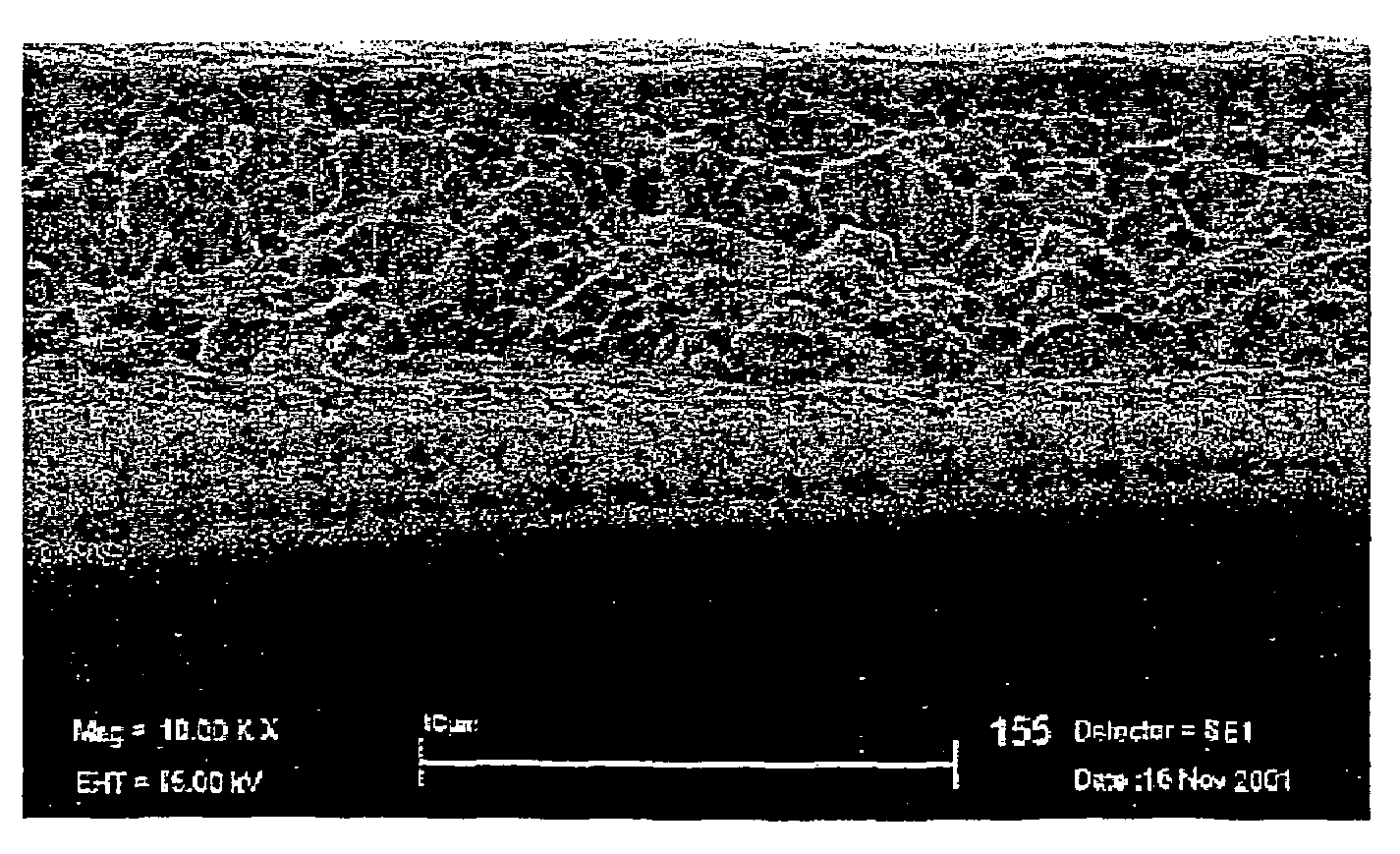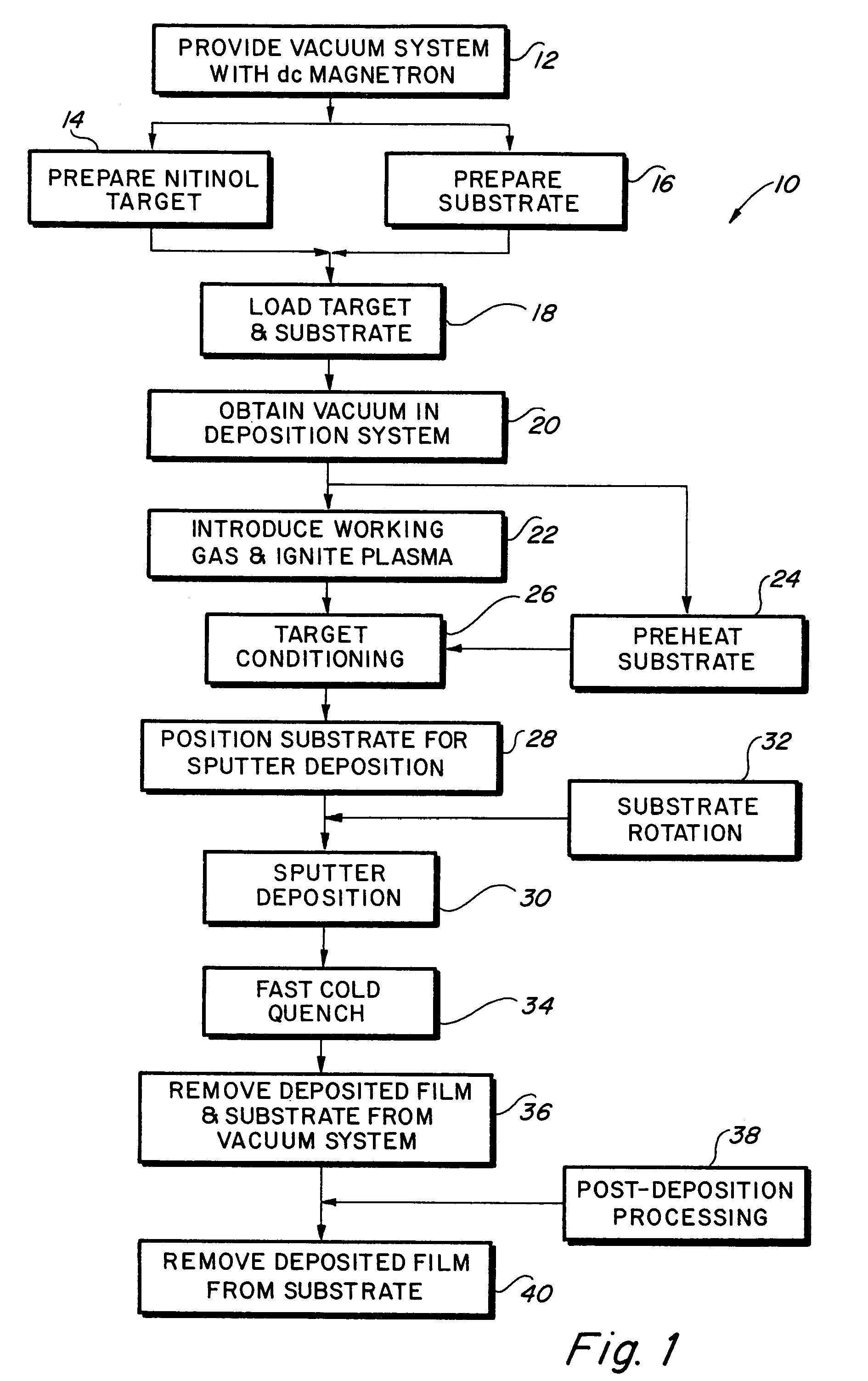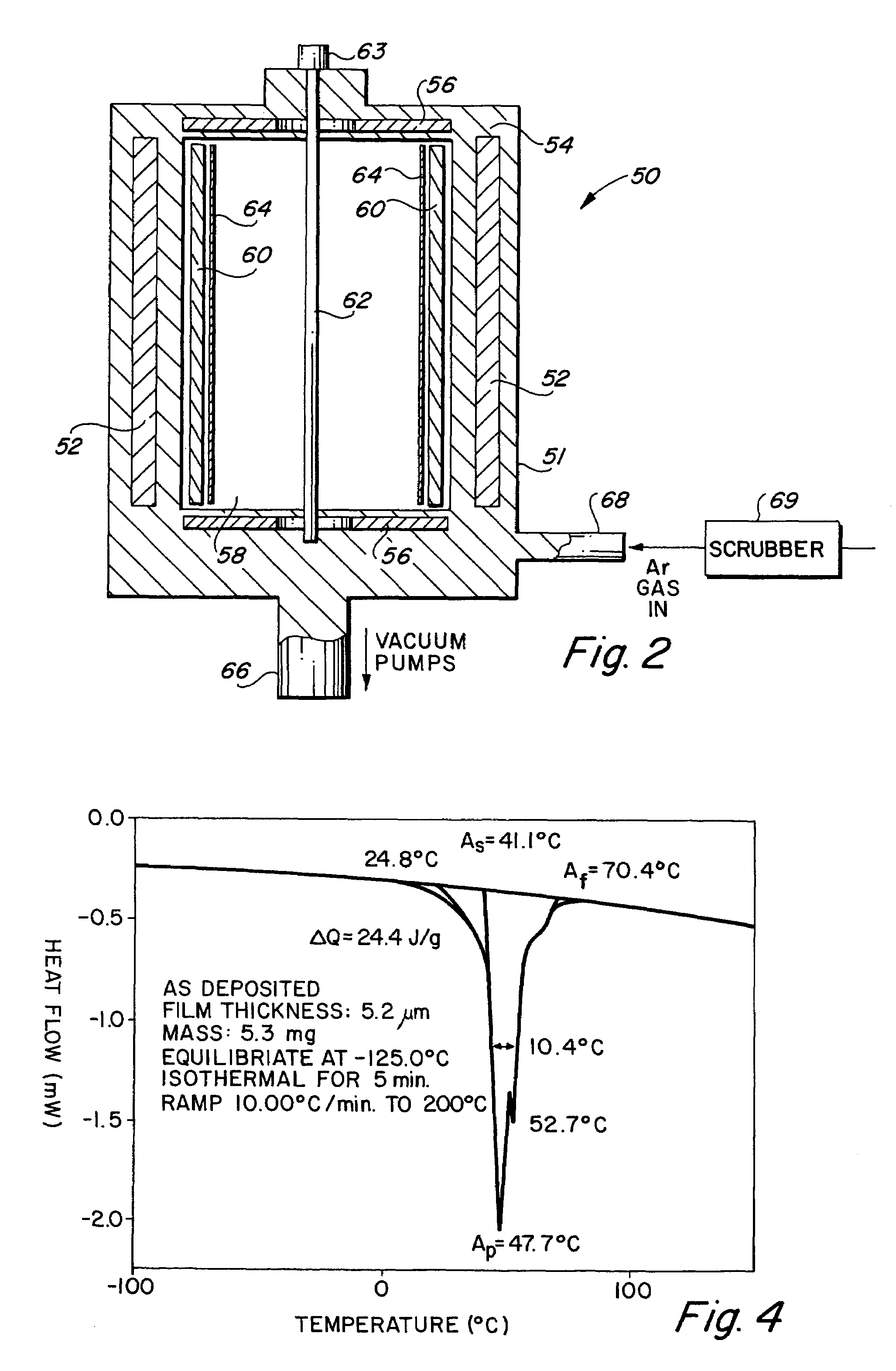High strength vacuum deposited nitinol alloy films and method of making same
a technology of nitinol alloys and vacuum deposited materials, which is applied in the direction of magnetic materials, prostheses, magnetic bodies, etc., can solve the problems of significantly limiting the usefulness of vacuum deposited nitinol films, no vacuum deposited thin film nitinol devices have been commercially marketed, and the mechanical properties of vacuum deposited films are inferior to those of similar articles fabricated by conventional metallurgy. achieve the effect of improving strength
- Summary
- Abstract
- Description
- Claims
- Application Information
AI Technical Summary
Benefits of technology
Problems solved by technology
Method used
Image
Examples
Embodiment Construction
[0038]The present invention includes an inventive high-strength shape memory and / or superelastic nitinol material as well as a process for fabricating the inventive material. The inventive material is characterized by having high mechanical strength and toughness. In accordance with the method of the present invention, the inventive high-strength nitinol material may be produced for certain intended end-uses, such as MEMS and medical devices, using deposition technologies including but not limited to PVD, sputter deposition, plasma deposition, ion beam deposition or the like to form the film, and post-deposition use of etching, photolithography, machining, or ablation techniques to fashion the deposited film for an intended end-use.
[0039]By employing vacuum deposition methodologies, one is able to form materials directly into a desired 2D or 3D geometry, e.g., planar, tubular, or multi-surfaced geometries. The common principle of the deposition processes is to take a material in a m...
PUM
| Property | Measurement | Unit |
|---|---|---|
| transition temperature Ap | aaaaa | aaaaa |
| transition temperature Ap | aaaaa | aaaaa |
| transition temperature | aaaaa | aaaaa |
Abstract
Description
Claims
Application Information
 Login to View More
Login to View More - R&D
- Intellectual Property
- Life Sciences
- Materials
- Tech Scout
- Unparalleled Data Quality
- Higher Quality Content
- 60% Fewer Hallucinations
Browse by: Latest US Patents, China's latest patents, Technical Efficacy Thesaurus, Application Domain, Technology Topic, Popular Technical Reports.
© 2025 PatSnap. All rights reserved.Legal|Privacy policy|Modern Slavery Act Transparency Statement|Sitemap|About US| Contact US: help@patsnap.com



